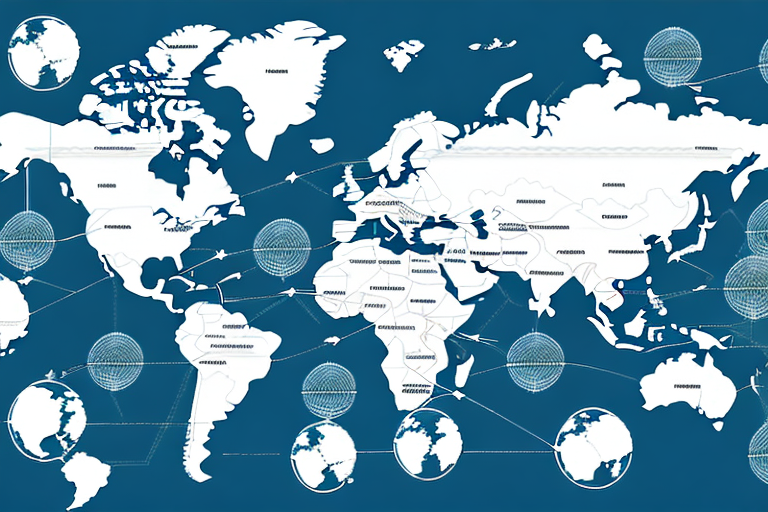The Importance of Geography and Regional Differences in Supply Chain Management
Geography plays a pivotal role in supply chain management, influencing various aspects such as transportation costs, lead times, resource availability, and regulatory compliance. Companies operating on a global scale must navigate diverse regional practices and business cultures to maintain an efficient and resilient supply chain.
Transportation Costs and Lead Times
The geographical distance between suppliers and consumers directly impacts transportation costs and lead times. For example, shipping goods from Asia to North America typically involves higher costs and longer delivery times compared to regional supply chains within Europe. According to a report by the World Bank, transportation accounts for approximately 11% of the total cost of goods sold in global supply chains.
Resource and Labor Availability
Different regions offer varying levels of resource availability and labor quality. Companies must assess the local availability of raw materials and the skill level of the workforce when selecting manufacturing and distribution sites. This strategic placement can enhance efficiency and reduce costs.
Cultural and Business Practices
Cultural norms and business practices vary significantly across regions. Understanding and respecting these differences is essential for successful supply chain operations. For instance, negotiation styles and decision-making processes can differ, impacting supplier relationships and contract negotiations.
Legal and Regulatory Differences
Each country has its own set of laws and regulations governing trade, labor, and environmental standards. Compliance with these regulations is crucial to avoid legal penalties and ensure smooth operations. Companies often work with local experts to navigate these complex regulatory landscapes.
The Impact of Globalization and Sustainability on Supply Chains
Globalization has interconnected markets, allowing companies to source materials and sell products worldwide. However, this interconnectedness also brings challenges related to sustainability and ethical practices.
Technological Advancements Driving Globalization
Advancements in technology, particularly in communication and transportation, have facilitated the growth of global supply chains. The rise of digital platforms and logistics technologies has enabled real-time tracking and more efficient management of international shipments.
Sustainability and Social Responsibility
There is increasing pressure on companies to adopt sustainable practices. Consumers and stakeholders demand transparency and accountability in how products are sourced and manufactured. Sustainable supply chain practices not only reduce environmental impact but also enhance brand reputation. According to the United Nations, sustainable supply chains can significantly contribute to achieving global sustainability goals.
Key Elements of a Successful Global Supply Chain Strategy
A robust global supply chain strategy addresses the unique challenges of operating across different regions while optimizing efficiency and responsiveness. The key elements include:
- Collaboration and Partnership: Building strong relationships with suppliers, customers, and logistics partners to enhance coordination and information sharing.
- Technology Adoption: Implementing advanced technologies for better visibility, tracking, and management of supply chain activities.
- Risk Management: Identifying potential risks and developing contingency plans to mitigate disruptions.
- Sustainability: Incorporating environmentally friendly practices and ensuring ethical sourcing to meet regulatory and consumer demands.
- Talent Management: Attracting and retaining skilled professionals who can navigate the complexities of global supply chains.
Collaboration and Partnership
Effective collaboration with all stakeholders ensures seamless operations and quick resolution of issues. Strategic partnerships can lead to shared resources, reduced costs, and improved service levels.
Technology Adoption
Adopting technologies such as Enterprise Resource Planning (ERP) systems, Internet of Things (IoT), and blockchain enhances supply chain visibility and efficiency. For example, blockchain technology can provide secure and transparent tracking of products from origin to consumer.
Risk Management
Proactive risk management involves identifying vulnerabilities within the supply chain and implementing strategies to address them. This includes diversifying suppliers, maintaining safety stock, and developing contingency plans for unexpected disruptions.
Sustainability
Integrating sustainability into the supply chain involves reducing carbon emissions, minimizing waste, and ensuring ethical labor practices. Sustainable practices not only comply with regulations but also appeal to eco-conscious consumers.
Talent Management
Investing in employee training and development ensures that the workforce is equipped with the necessary skills to manage and innovate within the supply chain. A diverse and skilled workforce can drive continuous improvement and adapt to changing market conditions.
Overcoming Challenges and Managing Risks in Global Supply Chain Management
Global supply chains are susceptible to various challenges and risks, including geopolitical instability, natural disasters, and cyber threats. Addressing these challenges requires a multifaceted approach.
Enhancing Transparency and Visibility
Improved transparency and visibility across the supply chain enable companies to monitor operations in real-time, identify bottlenecks, and respond swiftly to disruptions. Technologies like blockchain and RFID can enhance traceability and accountability.
Regulatory Compliance
Maintaining compliance with international trade laws and local regulations is essential to avoid legal issues and ensure the smooth flow of goods. Partnering with local legal experts can help navigate complex regulatory environments.
Managing Supply Chain Disruptions
Developing contingency plans and maintaining flexible supply chain structures can help mitigate the impact of disruptions. Diversifying suppliers and establishing backup logistics options are effective strategies to enhance resilience.
Leveraging Technology for Geographically Diverse Supply Chains
Technology is a cornerstone of modern supply chain management, providing tools to optimize operations and improve decision-making.
RFID, GPS, and Blockchain
RFID and GPS technologies offer real-time tracking of goods, enhancing visibility and reducing the risk of loss or theft. Blockchain ensures secure and immutable records of transactions, fostering trust among supply chain partners.
Artificial Intelligence and Machine Learning
AI and machine learning algorithms analyze vast amounts of data to forecast demand, optimize inventory levels, and identify patterns that can inform strategic decisions. These technologies enable predictive analytics, which can anticipate disruptions and allow for proactive measures.
Internet of Things (IoT)
IoT devices collect and transmit data from various points in the supply chain, providing comprehensive insights into operations. This connectivity facilitates better coordination and efficiency across geographically dispersed networks.
Balancing Cost and Efficiency in Global Supply Chains
Achieving a balance between cost and efficiency is critical for maintaining competitiveness in global markets. This involves strategic planning and continuous optimization of supply chain processes.
Supply Chain Design
Designing an optimal supply chain network involves selecting the right combination of suppliers, manufacturing locations, and distribution centers to minimize costs while meeting service level requirements.
Inventory Optimization
Effective inventory management ensures that companies maintain adequate stock levels to meet demand without incurring excessive holding costs. Techniques such as Just-In-Time (JIT) and Economic Order Quantity (EOQ) can enhance inventory efficiency.
Transportation Planning
Optimizing transportation involves selecting the most cost-effective and reliable modes of transport. Balancing speed and cost is essential to meet delivery deadlines while controlling expenses.
Logistics Management
Efficient logistics management encompasses the coordination of all activities involved in the movement and storage of goods. Streamlining logistics processes can significantly reduce operational costs and improve service quality.
Future Trends in Geographically Diverse Supply Chain Management
The landscape of supply chain management is continually evolving, driven by technological advancements and changing market dynamics. Several key trends are shaping the future of geographically diverse supply chains:
Increased Adoption of AI and Automation
Artificial intelligence and automation are expected to play a larger role in supply chain operations, from automated warehouses to AI-driven decision-making tools. These technologies can enhance efficiency, reduce errors, and enable more agile responses to market changes.
Emphasis on Sustainability
Sustainable supply chains will become increasingly important as companies strive to meet environmental standards and consumer expectations. Practices such as reducing carbon emissions, using renewable energy sources, and minimizing waste will be integral to supply chain strategies.
Enhanced Supply Chain Agility
Agility refers to the ability of a supply chain to adapt quickly to changes and disruptions. Building agile supply chains involves flexible processes, diversified supplier bases, and robust contingency plans to ensure continuity in the face of unforeseen events.
Integration of Blockchain for Greater Transparency
Blockchain technology will continue to be integrated into supply chains to provide greater transparency and security. Its ability to create tamper-proof records of transactions and track the provenance of goods can enhance trust and compliance across the supply chain.
Growth of E-commerce and Direct-to-Consumer Models
The rise of e-commerce has shifted supply chain dynamics, with a greater focus on direct-to-consumer models. This trend requires supply chains to be more responsive and customer-centric, with efficient last-mile delivery systems to meet consumer demands for fast and reliable service.
Leveraging Big Data and Analytics
Big data analytics will become increasingly important for deriving actionable insights from the vast amounts of data generated by supply chain activities. These insights can inform strategic decisions, improve forecasting accuracy, and optimize overall supply chain performance.
In conclusion, managing a geographically diverse supply chain is a complex and challenging endeavor that necessitates strategic planning, effective collaboration, and continuous adaptation to technological advancements and market shifts. By embracing these strategies and trends, companies can build resilient and efficient supply chains that drive sustained growth and competitive advantage.






















